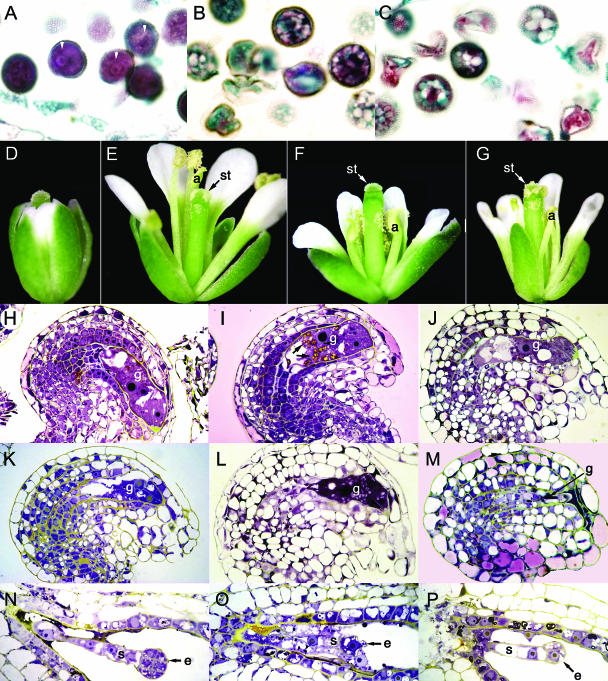Figure 4.
Salt stress disrupted the normal development of Arabidopsis pollen grains, ovules, and embryos. A, In healthy pollen grains, cytoplasm was dispersed throughout the cell. Arrowheads identify pollen nuclei. B, Prior to pollen abortion, cells became highly vacuolated. C, Many of these vacuolated pollen cells lysed and collapsed. D, A normal stage-12 flower, with the tips of the petals just emerging from behind the sepals. Flowers at this stage were stressed and the ovules within monitored over time for developmental defects. E, After 24 h, the flower shown in D opened and the stamens and petals had markedly increased in size. As stamen filaments lengthened, anthers (a) coated the stigma (st) with pollen. F, A stage-12 flower that was salt stressed. Eighteen hours later pollen dehisced, but filaments were too short to pollinate the stigma. G, A stage-12 flower that was salt stressed. Twenty-four hours later, the filaments elongated sufficiently to pollinate the stigma. H, Within a normal stage-12 flower, the gametophyte (g) is fully developed and competent to be fertilized. I, One day after salt stress, starch granules (arrows) accumulated in the gametophyte. J and K, Subsequently, these starch grains were mobilized from ovules, and the cells in the gametophyte become vacuolated. L, In the gametophyte, subcellular components were lysed and condensed. M, In some cells, condensation of debris left little evidence that a gametophyte had occupied this space. N, Healthy suspensor (s) and embryo (e). O, Following salt stress, an embryo aborted at the globular stage of embryogenesis. P, Before they senesced, the embryo and suspensor became highly vacuolated.

